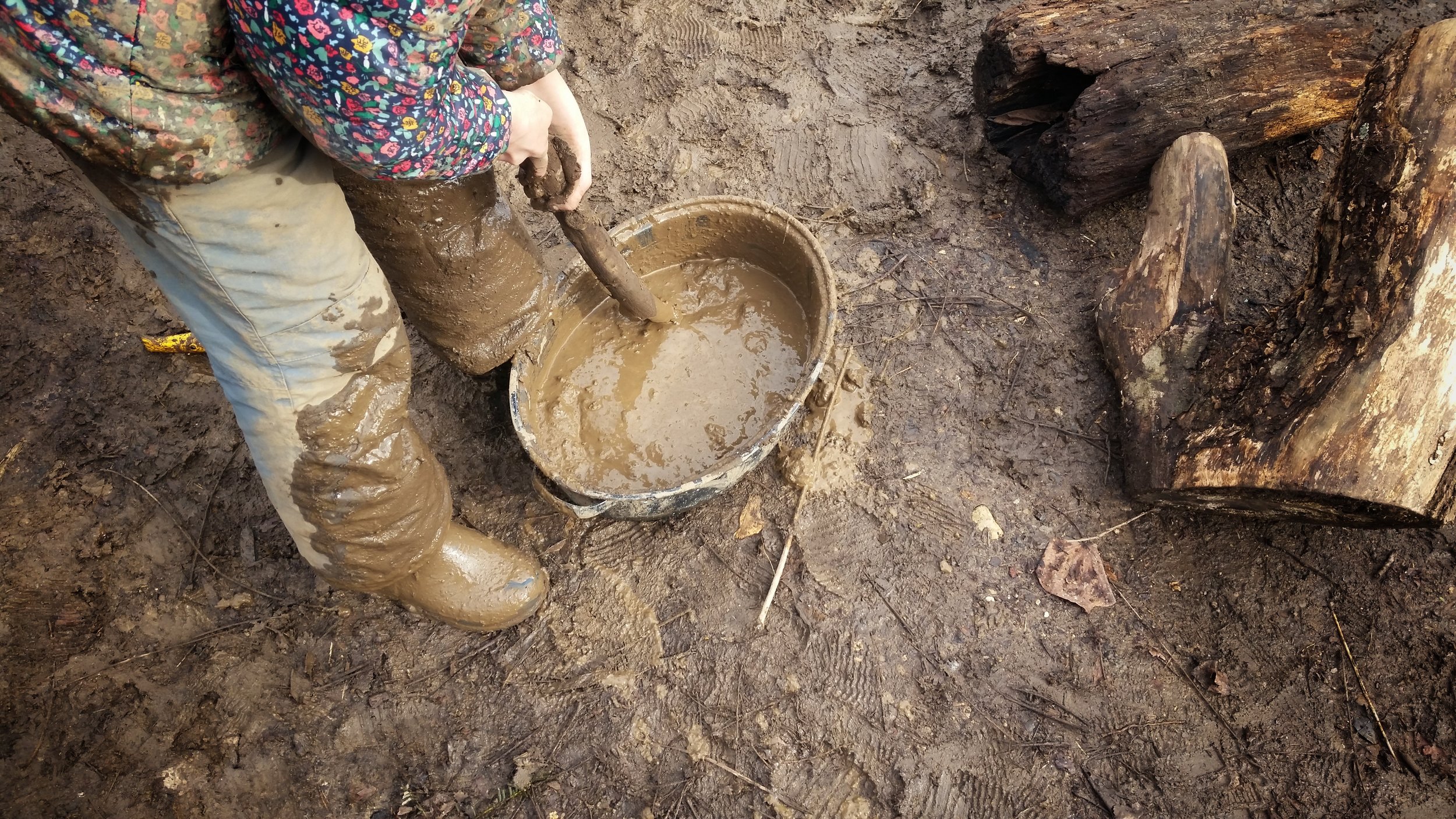Kids with Sticks
This post comes from ROCS Dad, Mark Fisher. Mark and I met when we were both active organizers for the Community Festival (ComFest). Based on our work together in that venue, I know him to be someone who engages the world with appreciation and wonder. A retired attorney, he loves live music and makes handmade greeting cards for his friends and family. When he offered to write for the ROCS Blog, I was excited to see what he'd come up with.
In trying to explain my goals for the ROCS blog to teachers, staff, and the ROCS Education committee, I often talk about making learning visible, a concept borrowed from the Reggio Emilia approach to early childhood education. Making learning visible strives to document aspects of learning that cannot be captured by summative tests and assessments, the learning that happens as students explore concepts together and share their ideas.
Inspired by my introduction to making learning visible, Mark observed the kids during unstructured outdoor play time one morning in late September. I love his contribution both for what it brings to our attention about how children play, but also as an outlet for his own creative connection to the natural world. Look forward to more reflections from him in the future.
- Jodi Kushins
Kids with Sticks - by Mark Fisher (with photos from Cassie Lewis)
After talking with Jodi and reading about making learning visible in the Ohio Visible Learning Project (OVLP), I noticed a lot of focus on listening to children. With that in mind, I took my notebook and pen and sat on a log to observe our ROCS kids during a morning session in the play area. At first I tried to concentrate on their conversations. Well, that didn’t work out too well. At my age and with my long history of listening to live rock and roll, I have a hard enough time understanding what adults are saying when they talk directly to me, much less children who are conversing with each other as they run around the woods. Pretty quickly I shifted my approach and ended up just visually observing what the children were doing.
There was one common activity that was inescapably obvious. So much of what the kids were doing involved their appropriation of the plentiful supply and variety of fractured remnants of fallen tree branches. Having succumbed to the forces of Mother Nature, they no longer stretched into the sky seeking a place for their leaves to catch the sunlight. They had devolved into stripped smooth, skeletal remains, perfect for tiny hands to comfortably grasp and young muscles to wield through the air. No longer the progeny of a family tree with life giving sap coursing through them or leaves sprouting from them, now they were just sticks. Reduced to the most basic, elemental shape; a line, a mark, a stroke.
The ancient simplicity of a stick and the magic of human imagination it can unlock, connects each child who grasps it with millennia of ancestors. It recalled for me, the scene in Kubricks’s 2001: A Space Odyssey in which the proto-human learns the power of a stick-like bone by playfully, at first, tapping then hitting then viciously smashing an animal skeleton with it. From toy to tool to weapon to elongated bone-white spaceship, the stick elicits a primal response in the hand of a child. My guess is that most children descended from chimps have picked up a stick in a wooded area and played with it, dug with it, fought with it and transformed it in their imagination.
As I watched the kids in the play area I saw a variety of of behaviors with the sticks. Sometimes they used them to create art. One child skewered fallen leaves. Another stuck small sticks into the ground creating an architectural sculpture. Some children seemed to just enjoy collecting and bundling sticks. Moving around larger sticks and small logs became a feat of strength. Medium-sized sticks were leaned against vines or bushes creating a type of shelter or sanctuary. A stick was used to dig into a rotted tree just for the visceral pleasure of disemboweling its soft, pulpy guts. Sticks were punched into the earth, unsuccessfully stuffed in a pocket and slapped against boots and legs. Swords slashed the through the air accompanied by swashbuckling exclamations of bravura and the swishing sounds expelled by bursts of air between clenched teeth. I heard the popping sound of pistols being fired, war cries and yelps. Spears were chucked, knives were sharpened and leaves were stirred in a pan. A twig suspended a plushy possum by its tail to make it fly. Ninja battles were choreographed in slow motion ballets. Sticks were carried around wherever they went, symbols of power and confidence, magic wands, scepters. They formed a fellowship of stick-wielders. Holding something so easy to grasp and manipulate radiates control and security, a palpable connection to the outside world, an entree into interaction with others, a key to unlock the flow of imagination.
One of the few memories I have of my own childhood is an undeveloped wooded area on the edge of my elementary school grounds where we played war, unsupervised, running down dirt paths, hiding in the bushes, splashing through the creek. I remember stick play was popular last year at ROCS how but I don’t remember thinking too much about it. The OVLP book suggests that “documentation requires learners, children, teachers and parents to slow down and reflect on the content and processes of learning” (OVLP). I’m not sure what I’ve learned or achieved by documenting kids with sticks, whether I’ve added anything to the scholarly discussion or helped increase understanding of their learning process but I did slow down and reflect. “Documenters are asked not only to observe and record but to interpret and share their observations” (OVLP) Thank you, at least, for allowing me to share my somewhat kaleidoscopic reflections with you.




